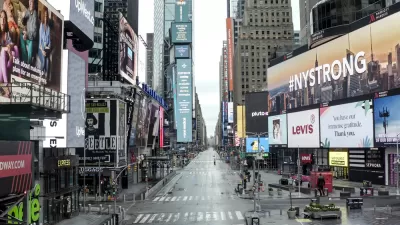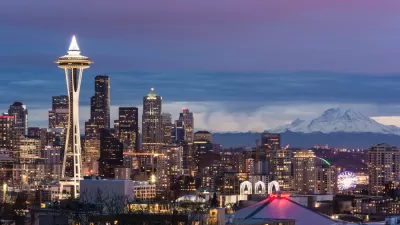After forty years in the statistical doldrums, what does Milwaukee make of a sudden, slight increase in population? Local expert and urban enthusiast Dave Steele reports.
"Milwaukee, like its baseball team, has spent the better part of the last four decades in the statistical doldrums. Population peaked in 1960 at 741,324. Since then, that number has slowly and steadily seeped away. The 2000 Census found the city's population had dipped below 600,000.
So when the US Census released a re-estimate of the city's 2006 population that showed a slight increase from 2000, it was as if the perennially losing team suddenly broke .500. Not quite enough to make the playoffs, but it sure beats being a perpetual cellar-dweller.
Of all the indicators we rely on to gauge the health and vitality of our cities, we put the most stock in population growth or decline. Median incomes, rates of educational attainment, poverty rates, crime rates – these are all important statistics that we can use to assess how well our cities are doing. But if your city is losing population it's hard for most people to argue that things are on the right track. (Although there is growing movement in some Midwestern cities that sees population loss as an opportunity as well as a challenge.)
But like a lot of statistics, demographics are basically estimates. Even the decennial census count is, at best, the most complete and accurate guess we have at the actual makeup of our communities. And the mid-decade estimates are even less reliable-no one believes for a second that there are really 602,782 souls residing in the city of Milwaukee, or that exactly 5,808 have moved in since the decade began.
We tend to fill in the data gaps with what we see with our own eyes. In Downtown Milwaukee, we see new condos left and right, so it stands to reason that the folks inhabiting these residences, the well educated and the professional, are those driving the city's modest population growth. Conveniently, this explanation allows us to tell a new story of Milwaukee: a former industrial powerhouse that's shaken off the rust and entered a new day: new kinds of jobs, a new breed of worker, a new kind of Milwaukeean.
But could there be another explanation for our sudden and unexpected uptick in population?"
Thanks to Dave Steele
FULL STORY: The New Milwaukeeans: Making Sense of Population Growth in the Cream City

Planetizen Federal Action Tracker
A weekly monitor of how Trump’s orders and actions are impacting planners and planning in America.

DARTSpace Platform Streamlines Dallas TOD Application Process
The Dallas transit agency hopes a shorter permitting timeline will boost transit-oriented development around rail stations.

Four Reasons Urban Planners Can’t Ignore AI
It’s no longer a question of whether AI will shape planning, but how. That how is up to us.

Texas State Bills to Defund Dallas Transit Die
DART would have seen a 30% service cut, $230M annual losses had the bills survived.

Bikeshare for the Win: Team Pedals to London Cricket Match, Beats Rivals Stuck in Traffic
While their opponents sat in gridlock, England's national cricket team hopped Lime bikes, riding to a 3-0 victory.

Amtrak’s Borealis Exceeds First Year Ridership Expectations
205,800 passengers have boarded the St. Paul to Chicago line, well above initial MDOT projections.
Urban Design for Planners 1: Software Tools
This six-course series explores essential urban design concepts using open source software and equips planners with the tools they need to participate fully in the urban design process.
Planning for Universal Design
Learn the tools for implementing Universal Design in planning regulations.
City of Mt Shasta
City of Camden Redevelopment Agency
City of Astoria
Transportation Research & Education Center (TREC) at Portland State University
US High Speed Rail Association
City of Camden Redevelopment Agency
Municipality of Princeton (NJ)





























